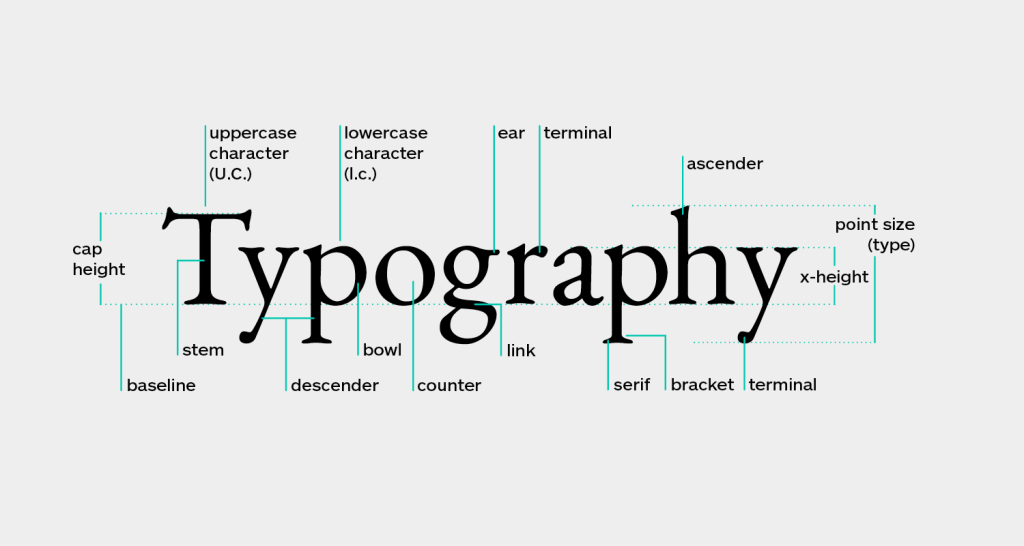In the realm of branding and identity design, typography plays a pivotal role in conveying a brand’s personality, values, and essence. As an experienced SEO expert and senior copywriter, I am excited to delve into the world of typography and its significant impact on shaping brand identity. Join me on this typographic exploration as we uncover the power of fonts in creating lasting impressions and fostering brand recognition. The website offers the Universe font free of charge, making it an excellent resource for designers on a budget.
The Essence of Branding and Identity Design
Branding goes beyond logos and visuals; it encompasses the entire perception and experience of a brand. Identity design focuses on crafting visual elements that represent the brand consistently across various touchpoints. Typography, as a key visual element, communicates the brand’s message and establishes a strong visual identity.
Choosing the Right Typeface
1. Understanding the Brand
The selection of a typeface begins with understanding the brand’s values, personality, target audience, and positioning in the market. Each brand has a unique story, and typography should align with that narrative.

2. Reflecting Brand Personality
Typefaces have distinct personalities, ranging from elegant and refined to bold and playful. The chosen typeface should reflect the brand’s personality and evoke the intended emotions in the audience.
3. Versatility and Scalability
A versatile typeface is essential to maintain consistency across various applications and platforms. It should remain legible and retain its visual impact even when scaled up or down.
Custom Typography and Brand Originality
Custom typography, also known as a custom typeface or logotype, is designed specifically for a brand. It offers unparalleled originality and uniqueness, reinforcing the brand’s exclusivity and distinctiveness.
1. Tailored to the Brand
Custom typography is tailor-made to fit the brand’s aesthetics, voice, and personality perfectly. This exclusive typeface ensures that the brand stands out from its competitors.
2. Enduring Identity
A custom typeface can become an enduring symbol of the brand, contributing to long-term brand recognition and recall among consumers.
3. Visual Consistency
Custom typography allows for precise control over letterforms, ensuring visual consistency across all brand materials and touchpoints.
Typography and Brand Perception
1. Trust and Credibility
The right typography can evoke feelings of trust and credibility, reinforcing the brand’s authority in the market.
2. Emotional Connection
Typography influences how consumers perceive and connect with a brand emotionally. A well-crafted typeface can evoke specific emotions and establish a deep connection with the audience.
3. Distinction and Differentiation
In a competitive landscape, typography helps a brand stand out and differentiate itself from others. It becomes a distinct visual identifier that consumers associate with the brand.
Typography in Brand Guidelines
Brand guidelines serve as a blueprint for consistent brand expression. Typography guidelines within these documents ensure that all brand communications align with the brand’s identity.
1. Typography Usage
Brand guidelines outline which typefaces to use for different purposes, such as headlines, body text, and subheadings. Consistent typographic usage strengthens the brand’s visual identity.
2. Spacing and Layout
Typography guidelines also cover spacing, kerning, and alignment rules to ensure a harmonious and balanced layout across all brand materials.
3. Color and Contrast
The guidelines may address color combinations with typography to ensure legibility and visual appeal.
Typography in Logo Design
1. The Impact of Letterforms
The typography used in a logo can dramatically influence how the brand is perceived. Bold and confident letterforms can convey strength, while elegant and flowing letters evoke sophistication.
2. Wordmarks and Lettermarks
Wordmarks and lettermarks rely heavily on typography, as the brand’s name itself becomes the logo. The choice of typeface is instrumental in crafting a memorable and iconic logo.
Typography and Digital Branding
In the digital era, typography extends beyond print materials and encompasses online platforms, mobile apps, and social media.
1. Responsive Typography
With various screen sizes and resolutions, responsive typography ensures legibility and consistency across devices.
2. Web Fonts
Web fonts enable brands to maintain typographic consistency on websites, ensuring that the chosen typeface appears consistently for all users.
3. Interactive Typography
Digital platforms offer opportunities for interactive typography, where fonts can be animated or altered to create engaging user experiences.
Conclusion
Typography is more than just letters; it is the language of branding and identity design. The choice of typeface, whether a carefully curated existing font or a custom-crafted masterpiece, significantly impacts a brand’s personality and perception.
Embrace the power of typography as a visual storyteller, communicating the essence of a brand and fostering an emotional connection with audiences. From traditional print materials to digital platforms, typography serves as a fundamental element in crafting a brand’s visual identity and making a lasting impression in the hearts and minds of consumers.
Remember, typography is not just about words—it’s about the stories those words tell and the brand identity they shape.